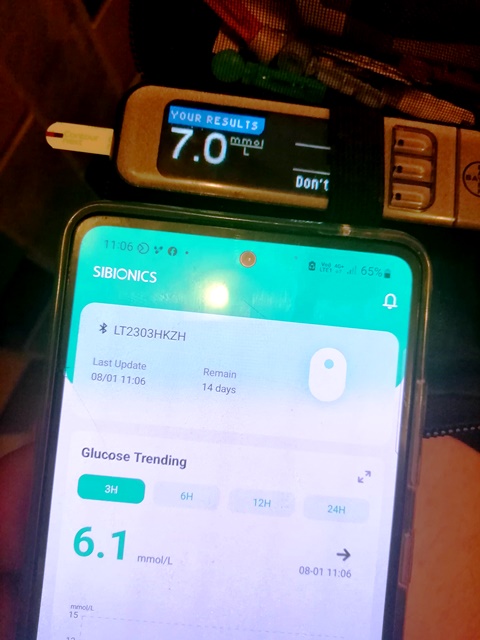One of the most creative introductions in this region was made by the Chinese sensor manufacturer Sibionics, and that was before it even arrived 😊.
They gifted two sensors to all interested individuals with diabetes. Despite something similar being done "once upon a time" by Abbott, a wave of excitement swept through the region because many people still do not have sensor coverage under their health insurance.
Sibionics has a fresh EU CE certificate, but for some time now, they have also obtained one from the Chinese regulatory agency. Thanks to the latter, they have sold just under half a million sensors in China so far:

What is Sibionics like?
Let's start with the drawbacks. I have a Samsung A52 mobile phone, and I encounter an issue where the application loses connection with the sensor. In such cases, I have to click "re-connect" on the main screen of the app. This happens approximately once a day. I have reported it to Sibionics, and they assured me they will fix it.
It's important to note that many other testers in the region have not reported such problems with their phones, so I believe that mine will be resolved soon. As supporting evidence, here is an excellent video segment by Tom, a well-known YouTube blogger, in which he claims that his connection has been stable:
Tom, on the other hand, is bothered by the fact that in the current version of the application. It is not possible to temporarily mute/delay the hypoglycemia alarm. Another issue that can be resolved.
What is good about the Sibionics sensor?
I personally like its resemblance to the Libra, which means it is very user-friendly. In fact, a similar approach was taken by the American company Medtronic with its latest sensor, Simplera, which was discussed on this portal.
Detailed specifications of the Simbionics sensor:
- Sensor lasts 14 days
- No separate transmitter (all in one)
- No blood calibration required
- No physical reader, there is mobile app (Android & iPhone)
- Declared MARD 8.8%
- Waterproof (according to IPX8 standard)
An interesting detail is that the Bluetooth chip in Sibionics sensors was not made by the Chinese but by a European, more precisely, a Norwegian company called "Nordic Semiconductor", so the Chinese are rightfully proud of the exceptionally sophisticated chip and low energy consumption.
Accuracy of the Sibionics sensor
Through everyday use and occasional comparisons with blood, the sensor has proven to be acceptably accurate. The blogger Tom was also very satisfied in his YouTube video.
Here are a few of my comparative results at normal and high sugar levels:



As before, we remind you that every sensor has its "critics" and "admirers". The fact that Sibionics sensors were very accurate for me and Tom doesn't necessarily mean the same for you.
Size of the Sibionics sensor
It is one of the smaller sensors on the market. I believe the pictures will confirm that it is barely larger than the Libre 2 sensor:


In the photos above, the left side shows the Libre 2, and the right side shows the Sibionics sensor.
It is very useful that with each sensor, you will receive an additional patch with a plastic holder. If the primary patch does not hold well enough, feel free to use the extra one you will receive as a gift. It is perfectly tailored to fit the sensor, ensuring it does not cover the top surface and does not reduce the range.

With each sensor comes an alcohol wipe for cleaning and disinfecting the sensor placement site. This additional step of wiping away any impurities will contribute to better adhesion of the sensor to the skin, reducing the chances of premature detachment.
Conclusion
It's nice that this Chinese manufacturer offered Europeans the opportunity for free testing of their sensors. Thanks to their generosity, introductory reviews can be found not only on the mentioned Tom's YouTube channel but also on Tim Street's DiabetTech portal.
If the price is competitive, and the product maintains consistent quality with good warranty support, it could find its place in the market 😊.
Best of luck to us all.
Link na Sibionics







